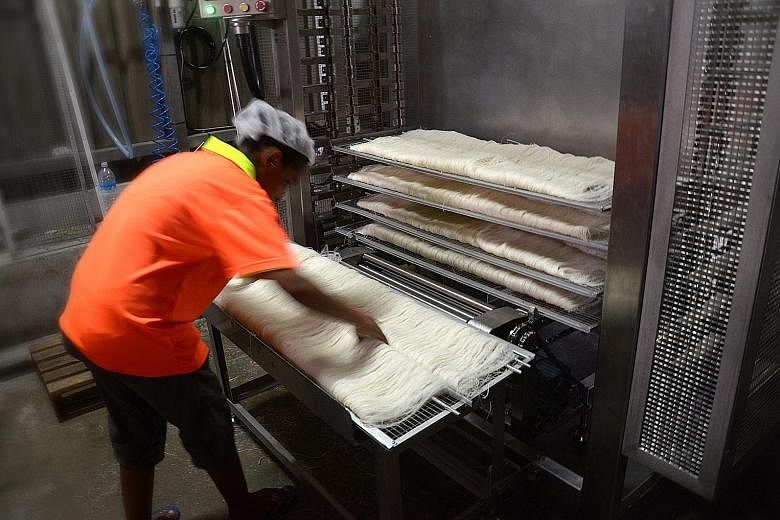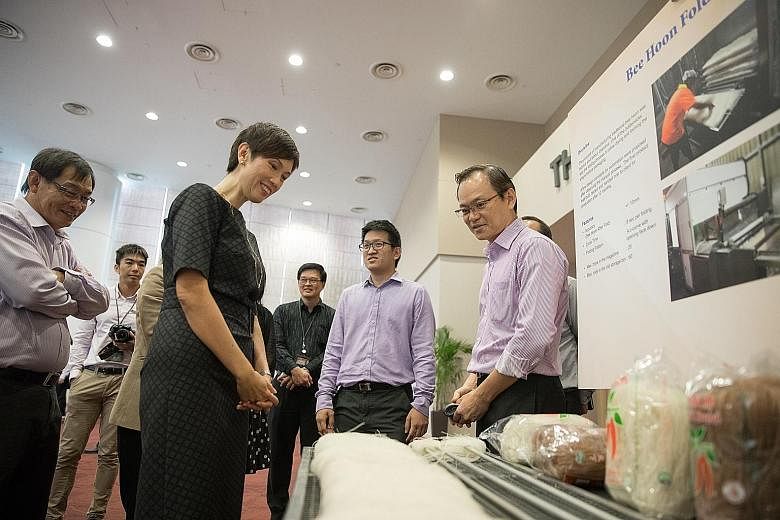As his bee hoon business was expanding in 2013, People Bee Hoon Factory director Desmond Goh found he did not have enough workers to keep up with orders.
Though much of the manufacturing process was automated, one step still had to be done by hand - the folding and packaging of the vermicelli. Engineering firms that the 32-year-old approached told him it was too difficult to automate.
That was when Spring Singapore brought Mr Goh and the Institute of Technical Education (ITE) engineering team together. In a year, the team developed a bee hoon folding machine, which the company has been using since.
The machine was one of nine success stories showcased at ITE's fourth Industry Partnership Forum yesterday.
ITE said the event has been drawing more interest over the years, growing from 60 companies attending in 2014 to 140 companies this year.
Projects spanned a myriad of industries, solving issues from productivity to manpower. Some booths included a hands-free electrolarynx which helps patients who have damaged or missing voice boxes speak, no-sugar-added or low-sugar gelato and a smart store shelf that can track the popularity of a product.
Mr Goh said the machine made by ITE reduced the number of workers for the bee hoon folding process from 10 to just two. It allowed the other employees, mostly aged 50 and above, to take on more productive jobs instead.
"Imagine holding a 1m rod full of noodles and repeating the same job for the whole day. It was really quite tiring for them," he said.
Mrs Josephine Teo, Minister, Prime Minister's Office, and Second Minister for Manpower and Home Affairs, was the guest of honour at the ITE forum.
She said that Singapore's 2 per cent GDP growth last year was due to a 1 per cent manpower and 1 per cent productivity growth, different from 2011 to 2014, which saw growth due to only manpower.
She called on small and medium-sized enterprises (SMEs) to leverage on technology and automation, urging them to participate in the Lean Enterprise Development Scheme, which helps companies tap on various productivity schemes.
With the help of institutes such as ITE, Mrs Teo said companies can ultimately make jobs "easier, safer and smarter for workers of all ages".


